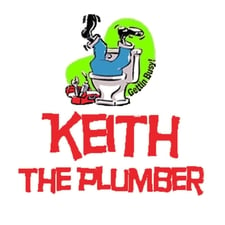
Get matched with top concrete resurfacing pros in Sterrett, AL
Enter your zip and get matched with up to 5 pros
Need a pro for your concrete resurfacing project in Sterrett, AL?
TRUSTED BY STERRETT, AL HOMEOWNERS
4.3
Average homeowner rating86
Verified concrete resurfacing reviews
Verified Reviews for Concrete Resurfacing pros in Sterrett, AL
*The Angi rating for Concrete Resurfacing companies in Sterrett, AL is a rating based on verified reviews from our community of homeowners who have used these pros to meet their Concrete Resurfacing needs.
*The HomeAdvisor rating for Concrete Resurfacing companies in Sterrett, AL is a rating based on verified reviews from our community of homeowners who have used these pros to meet their Concrete Resurfacing needs.
Last update on December 14, 2025
Find Concrete resurfacing pros in Sterrett
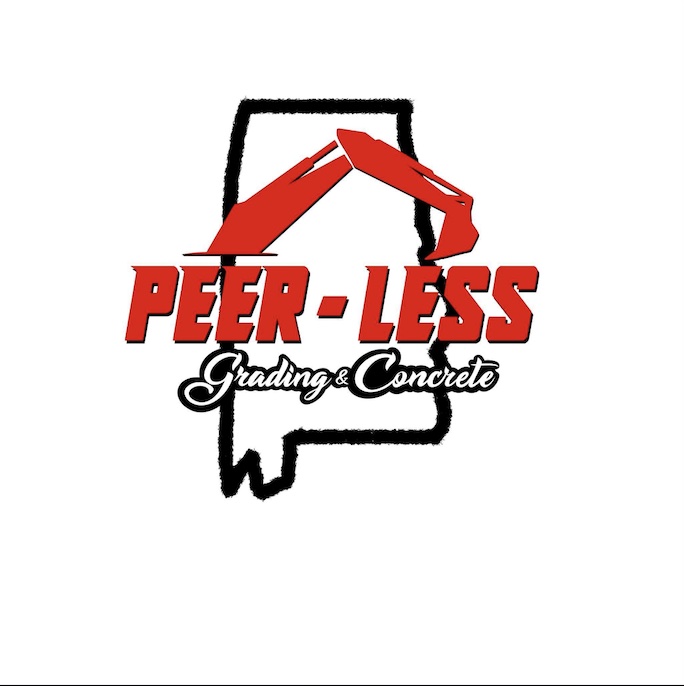
Peer-Less
Peer-Less
Our mission is to be a provider that brings back the personal touch with our customers. We will build a relationship that will last a lifetime after you see our quality work. As a locally owned and operated business we feel invested in our clients and constantly strive for customer satisfaction. We won't leave until the job is done right! Call or click to schedule an estimate today! Additional phone 205.517.0612
"Marcus and his team did a fantastic job! Definitely will use in the future for other projects! Kept all promises and followed up and explain things in detail. Made appointments. Was on time and expedited my request. Definitely a four star job."
frank s on April 2025
Our mission is to be a provider that brings back the personal touch with our customers. We will build a relationship that will last a lifetime after you see our quality work. As a locally owned and operated business we feel invested in our clients and constantly strive for customer satisfaction. We won't leave until the job is done right! Call or click to schedule an estimate today! Additional phone 205.517.0612
"Marcus and his team did a fantastic job! Definitely will use in the future for other projects! Kept all promises and followed up and explain things in detail. Made appointments. Was on time and expedited my request. Definitely a four star job."
frank s on April 2025
Garza Construction
Garza Construction
We are a family business with over 20 years of experience that specializes in concrete work such as driveways, sidewalks, concrete slabs, retaining walls, and decorative concrete. We also offer work such as decking and small pavilions.
"Antonio Garza and his workers from Garza Construction were a pleasure to do business with. He did beautiful work on my patio and front brick masonry. Pricing was fair and Antonio was very easy to communicate with. He also set expectations, exceeded them, didn’t hesitate to reach out when complications arrived and even had solutions. As a navy veteran I look forward to any and all future projects at my home by Garza Construction!"
Ronald G on November 2025
We are a family business with over 20 years of experience that specializes in concrete work such as driveways, sidewalks, concrete slabs, retaining walls, and decorative concrete. We also offer work such as decking and small pavilions.
"Antonio Garza and his workers from Garza Construction were a pleasure to do business with. He did beautiful work on my patio and front brick masonry. Pricing was fair and Antonio was very easy to communicate with. He also set expectations, exceeded them, didn’t hesitate to reach out when complications arrived and even had solutions. As a navy veteran I look forward to any and all future projects at my home by Garza Construction!"
Ronald G on November 2025

OX Foundation Solutions
OX Foundation Solutions
At, OX Foundation Solutions, LLC, our certified basement waterproofing and foundation repair specialists are ready to help with your basement or crawl space concerns. We offer a full range of basement waterproofing, foundation repair, and crawl space encapsulation services from drainage, and sump pump installation to structural repair solutions. We will make your whole home healthier and safer for your family by treating basement and foundation issues with our custom designed waterproofing, foundation repair, and moisture control systems. With many years of experience on our team, you can always count on us to come up with the right solutions. We offer a wide range of foundation repair and basement waterproofing services to home owners in Birmingham, Montgomery, Tuscaloosa, and Huntsville area.
"I love my husband"
Trish H on April 2023
At, OX Foundation Solutions, LLC, our certified basement waterproofing and foundation repair specialists are ready to help with your basement or crawl space concerns. We offer a full range of basement waterproofing, foundation repair, and crawl space encapsulation services from drainage, and sump pump installation to structural repair solutions. We will make your whole home healthier and safer for your family by treating basement and foundation issues with our custom designed waterproofing, foundation repair, and moisture control systems. With many years of experience on our team, you can always count on us to come up with the right solutions. We offer a wide range of foundation repair and basement waterproofing services to home owners in Birmingham, Montgomery, Tuscaloosa, and Huntsville area.
"I love my husband"
Trish H on April 2023
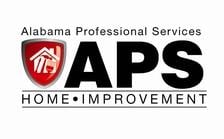
Alabama Professional Services, Inc.
Alabama Professional Services, Inc.
Founded in 1977 and in its third generation as a family run business, Alabama Professional Services, Inc., is now one of the largest pest, termite and foundation/waterproofing companies in Alabama. By following through on a promise of excellent customer service, quality installations, and industry leading products, Craig Williams, Owner of Alabama Professional Services, Inc., and his company are constantly growing, establishing themselves in a position at the very top of their industry.
"They did a good work and they did the job in timely manner"
James S on January 2025
Founded in 1977 and in its third generation as a family run business, Alabama Professional Services, Inc., is now one of the largest pest, termite and foundation/waterproofing companies in Alabama. By following through on a promise of excellent customer service, quality installations, and industry leading products, Craig Williams, Owner of Alabama Professional Services, Inc., and his company are constantly growing, establishing themselves in a position at the very top of their industry.
"They did a good work and they did the job in timely manner"
James S on January 2025

HomeLifters LLC
HomeLifters LLC
HomeLifters is a family owned local Alabama company. We are specialty contractors that focus on three areas of service. 1. We are experienced experts with the knowledge to repair any type of residential and light commercial foundation repair work. 2. We also can address any and all residential and commercial waterproofing repairs including slab on grade foundations. 3. We also provide concrete repair and replacement services for sinking and cracked concrete as well. We are the number one locally owned company in Alabama providing solutions to your foundation problems with white glove repair services and extreme customer service. We live in the communities we serve and provide the best foundation, waterproofing, and concrete repair solutions period. Financing Available! Call, text or email us today!
"These guys are the real deal! I’ve had other contractors that I could hardly get a hold of. Communication was excellent and they were extremely responsive. Job was done quickly and job site was kept clean. I was happy with the price, but best of all, my basement is DRY after several years of fighting the water seepage! I highly recommend this company! "
Denise P on November 2025
HomeLifters is a family owned local Alabama company. We are specialty contractors that focus on three areas of service. 1. We are experienced experts with the knowledge to repair any type of residential and light commercial foundation repair work. 2. We also can address any and all residential and commercial waterproofing repairs including slab on grade foundations. 3. We also provide concrete repair and replacement services for sinking and cracked concrete as well. We are the number one locally owned company in Alabama providing solutions to your foundation problems with white glove repair services and extreme customer service. We live in the communities we serve and provide the best foundation, waterproofing, and concrete repair solutions period. Financing Available! Call, text or email us today!
"These guys are the real deal! I’ve had other contractors that I could hardly get a hold of. Communication was excellent and they were extremely responsive. Job was done quickly and job site was kept clean. I was happy with the price, but best of all, my basement is DRY after several years of fighting the water seepage! I highly recommend this company! "
Denise P on November 2025

Home Maintenance Masonry, LLC
Home Maintenance Masonry, LLC
We can save you money on your home repairs and your to-do list. We are committed to helping you with experience, dedication, and reliability. We have 38 years of experience you can trust. These are the services we provide. We can help you with any repairs to Brickwork, Stonework, and Concrete work, and with any settling or cracking in your Concrete driveways, foundations, Walkways, or Porches. and Steps, Patios, Chimneys, and Retaining walls. We also resurface driveways. I have around 400 videos you can watch on my YouTube channel. Please search YouTube repairs for your home, Steve Reid. To see our workmanship. We also cover or lay beautiful Stone on top of your existing concrete patios, walkways porches. Steps and pool decks to add curb appeal. We can divert any standing water in your yard with French drains. We seal coat Asphalt, Driveways and visit my website repairs for your home.com. Thank you for calling us to make an appointment at 205 647-6477. We need a job, thank you
"Mr Reid has 400 videos of his workmanship. For homeowners he has worked for, He does excellent quality work. He did a great job for me and many of my dear friends. If you're considering hiring him, you can visit his YouTube channel and watch some of the other jobs he has completed to see before, during, and after the project is completed; he builds and repairs driveways, walkways, patios, steps, and structural cracks. I believe he has a great portfolio to help any homeowner, just like he has helped and did a great job. I would recommend his company to any homeowner. His YouTube channel is Repairs for your home Steve Reid"
Ann h on December 2023
We can save you money on your home repairs and your to-do list. We are committed to helping you with experience, dedication, and reliability. We have 38 years of experience you can trust. These are the services we provide. We can help you with any repairs to Brickwork, Stonework, and Concrete work, and with any settling or cracking in your Concrete driveways, foundations, Walkways, or Porches. and Steps, Patios, Chimneys, and Retaining walls. We also resurface driveways. I have around 400 videos you can watch on my YouTube channel. Please search YouTube repairs for your home, Steve Reid. To see our workmanship. We also cover or lay beautiful Stone on top of your existing concrete patios, walkways porches. Steps and pool decks to add curb appeal. We can divert any standing water in your yard with French drains. We seal coat Asphalt, Driveways and visit my website repairs for your home.com. Thank you for calling us to make an appointment at 205 647-6477. We need a job, thank you
"Mr Reid has 400 videos of his workmanship. For homeowners he has worked for, He does excellent quality work. He did a great job for me and many of my dear friends. If you're considering hiring him, you can visit his YouTube channel and watch some of the other jobs he has completed to see before, during, and after the project is completed; he builds and repairs driveways, walkways, patios, steps, and structural cracks. I believe he has a great portfolio to help any homeowner, just like he has helped and did a great job. I would recommend his company to any homeowner. His YouTube channel is Repairs for your home Steve Reid"
Ann h on December 2023

The Crack Guys - Affordable Foundation & Repairs, Inc.
The Crack Guys - Affordable Foundation & Repairs, Inc.
Welcome to The Crack Guys - Affordable Foundation & Home Repairs! We are seasoned experts who specialize in repairing and waterproofing house foundations, basements, and crawl spaces. Our team of experienced professionals uses only the highest quality products and proven techniques to ensure that your home remains solid and dry, no matter what challenges Mother Nature throws its way. We approach every project with the utmost professionalism, treating your home as if it were our own. Our specialties include the following services: foundation repair; basement and crawl space wall repair; retention wall repair; yard, basement, and crawl space drainage systems; basement and crawl space waterproofing; basement and crawl space rotted wood repair; basement and crawl space mold remediation; concrete lifting; crawl space encapsulation; floor joists and subfloor repair; floor support installation; and garage lintel repair. Call us today to schedule a free inspection and a free estimate!
"Worked efficiently"
Kim W on March 2025
Welcome to The Crack Guys - Affordable Foundation & Home Repairs! We are seasoned experts who specialize in repairing and waterproofing house foundations, basements, and crawl spaces. Our team of experienced professionals uses only the highest quality products and proven techniques to ensure that your home remains solid and dry, no matter what challenges Mother Nature throws its way. We approach every project with the utmost professionalism, treating your home as if it were our own. Our specialties include the following services: foundation repair; basement and crawl space wall repair; retention wall repair; yard, basement, and crawl space drainage systems; basement and crawl space waterproofing; basement and crawl space rotted wood repair; basement and crawl space mold remediation; concrete lifting; crawl space encapsulation; floor joists and subfloor repair; floor support installation; and garage lintel repair. Call us today to schedule a free inspection and a free estimate!
"Worked efficiently"
Kim W on March 2025
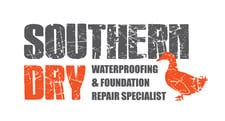
SouthernDry
SouthernDry
Avoid the big-box franchise. Get the SouthernDry Advantage. Local & family owned. We offer the highest quality foundation repair, basement waterproofing and crawl space services anywhere in Alabama. Honesty, integrity and amazing customer service. It's what we do. CALL NOW 205-719-2544
"They are prompt and they work hard to get the job finished."
Brian M on April 2022
Avoid the big-box franchise. Get the SouthernDry Advantage. Local & family owned. We offer the highest quality foundation repair, basement waterproofing and crawl space services anywhere in Alabama. Honesty, integrity and amazing customer service. It's what we do. CALL NOW 205-719-2544
"They are prompt and they work hard to get the job finished."
Brian M on April 2022
Campbell's Paving Asphalt & Concrete
Campbell's Paving Asphalt & Concrete
Campbell's Paving Asphalt & Concrete, is committed to excellence in every aspect of our business. We uphold a standard of integrity bound by fairness, honesty and personal responsibility. Our distinction is the quality of service we bring to our customers. Accurate knowledge of our trade combined with ability is what makes us true professionals. Above all, we are watchful of our customers interests, and make their concerns the basis of our business.
Campbell's Paving Asphalt & Concrete, is committed to excellence in every aspect of our business. We uphold a standard of integrity bound by fairness, honesty and personal responsibility. Our distinction is the quality of service we bring to our customers. Accurate knowledge of our trade combined with ability is what makes us true professionals. Above all, we are watchful of our customers interests, and make their concerns the basis of our business.
J&J All Around Construction
J&J All Around Construction
J&J All Around Construction is committed to excellence in every aspect of our business. We uphold a standard of integrity bound by fairness, honesty, and personal responsibility. Our distinction is the quality of service we bring to our customers. Accurate knowledge of our trade, combined with ability is what makes us true professionals. Above all, we are watchful of our customers' interests, and make their concerns the basis of our business
J&J All Around Construction is committed to excellence in every aspect of our business. We uphold a standard of integrity bound by fairness, honesty, and personal responsibility. Our distinction is the quality of service we bring to our customers. Accurate knowledge of our trade, combined with ability is what makes us true professionals. Above all, we are watchful of our customers' interests, and make their concerns the basis of our business
The Sterrett, AL homeowners’ guide to concrete resurfacing
From average costs to expert advice, get all the answers you need to get your job done.
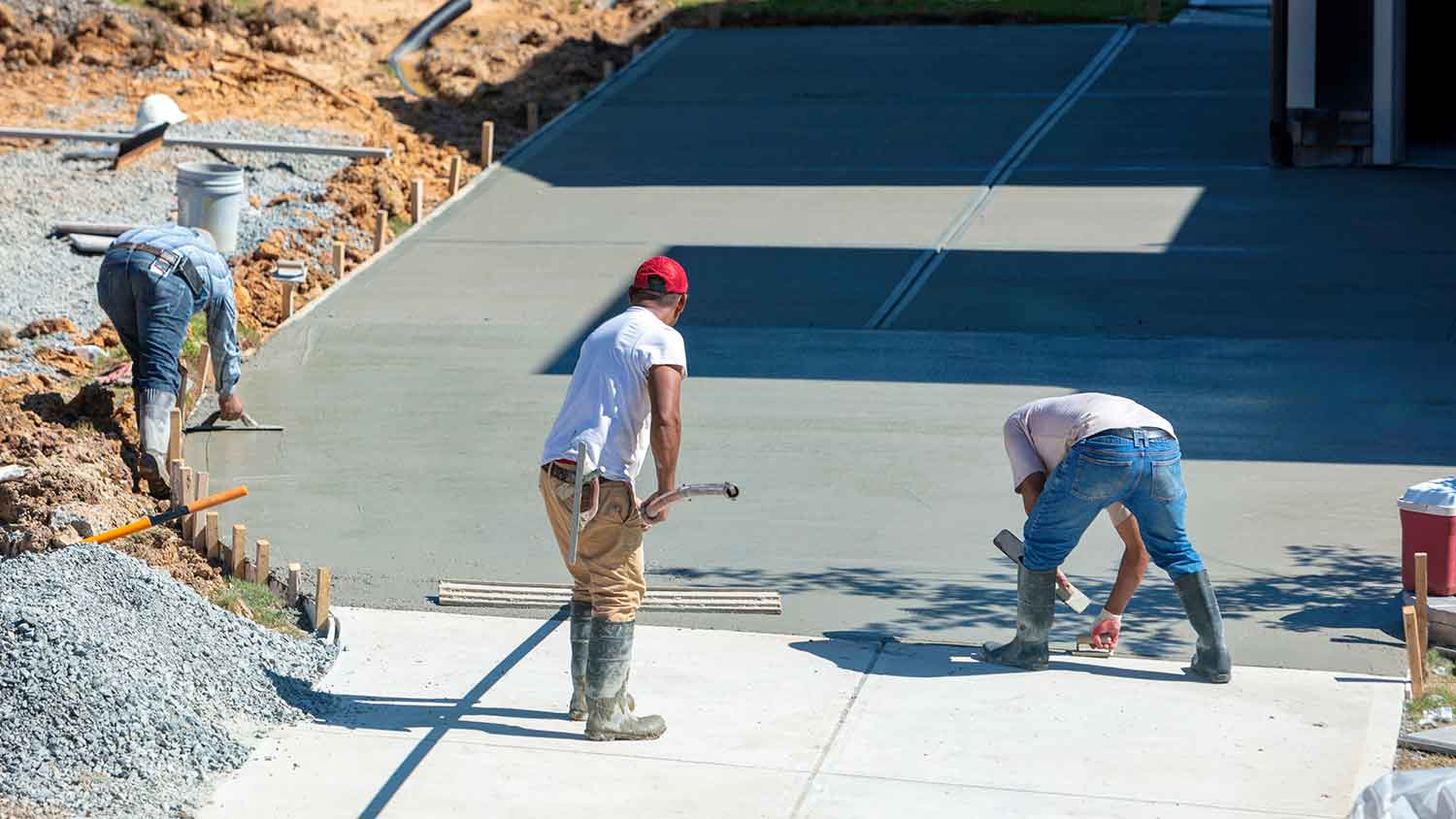 •
•Discover the average concrete pumping cost, including key price factors and tips to help you budget for your next concrete project.

Between the endless customizations and decades of strength, the cost of a concrete driveway may be worth the investment. Let's break down your bottom line.
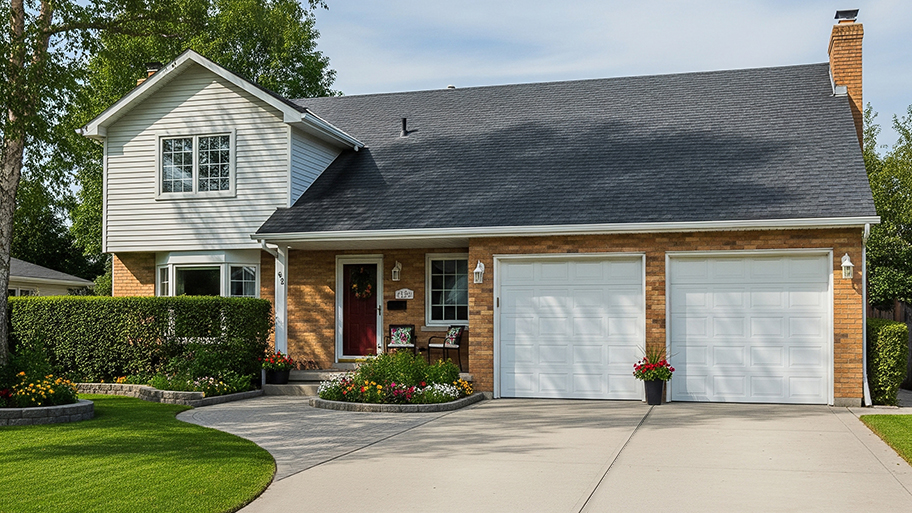
Concrete driveways stand up to a lot of pressure over the years. How much do concrete driveway repairs cost when it's time to give it a little TLC?

Before hiring a concrete driveway contractor, you should know what you’re looking for. Here’s what you need to know on how to hire a driveway contractor.

Before you hire a pro to pour a new concrete driveway, you should have a good idea of what you need. Discuss these concrete driveway installation questions with a pro.

Hairline cracks in your driveway, walkway, slab, or garage floor are common, but not ideal. Learn what to do about new concrete cracking.
- Westover, AL Concrete resurfacing pros
- Vandiver, AL Concrete resurfacing pros
- Harpersville, AL Concrete resurfacing pros
- Vincent, AL Concrete resurfacing pros
- Leeds, AL Concrete resurfacing pros
- Chelsea, AL Concrete resurfacing pros
- Moody, AL Concrete resurfacing pros
- Shoal Creek, AL Concrete resurfacing pros
- Meadowbrook, AL Concrete resurfacing pros
- Cahaba Heights, AL Concrete resurfacing pros
- Wilsonville, AL Concrete resurfacing pros
- Irondale, AL Concrete resurfacing pros
- Cropwell, AL Concrete resurfacing pros
- Childersburg, AL Concrete resurfacing pros
- Mountain Brook, AL Concrete resurfacing pros
- Vestavia Hills, AL Concrete resurfacing pros
- Trussville, AL Concrete resurfacing pros
- Argo, AL Concrete resurfacing pros
- Pell City, AL Concrete resurfacing pros
- Odenville, AL Concrete resurfacing pros
- Hoover, AL Concrete resurfacing pros
- Center Point, AL Concrete resurfacing pros
- Columbiana, AL Concrete resurfacing pros
- Homewood, AL Concrete resurfacing pros
- Margaret, AL Concrete resurfacing pros
- Indian Springs, AL Concrete resurfacing pros
- Pelham, AL Concrete resurfacing pros
- Tarrant, AL Concrete resurfacing pros
- Alpine, AL Concrete resurfacing pros
- Concrete Repair in Sterrett
- Concrete Stamped Decorative in Sterrett
- Epoxy Flooring in Sterrett
- Patios in Sterrett
- Driveways in Sterrett
- Concrete Leveling in Sterrett
- Tennis Court Contractors in Sterrett
- Concrete Finishing in Sterrett
- Repair Patio in Sterrett
- Floor Polishers in Sterrett
- Sandblasting Services in Sterrett
- Tree Service in Sterrett
- Lawn And Yard Work in Sterrett
- Cleaning in Sterrett
- Roofing in Sterrett
- Plumbing in Sterrett
- Pressure Washing in Sterrett
- Home Inspection in Sterrett
- Landscaping in Sterrett
- Air Duct Cleaning in Sterrett
- Deck Maintenance in Sterrett
- Fencing in Sterrett
- Kitchen And Bath Remodeling in Sterrett
- Mailbox Repair in Sterrett
- Water And Smoke Damage in Sterrett
- Excavating in Sterrett
- Garbage Collection in Sterrett
- Floor Cleaning in Sterrett
- Animal Removal in Sterrett
- Fireplaces in Sterrett
- Dryer Vent Cleaning in Sterrett
- Landscaping Lighting in Sterrett
- Doors in Sterrett
- Swimming Pools in Sterrett
- Painting in Sterrett
- Driveway Gates in Sterrett
- Concrete Driveways in Sterrett
- Property Appraiser in Sterrett
- Mulch And Topsoil in Sterrett
- Chimney Sweep in Sterrett
- Handyman Service in Sterrett
- 🌱 "Mow a small front yard"
- 🛠 "Fix a leaking pipe under the sink"
- 🏠 "Repair shingles on an asphalt roof"





